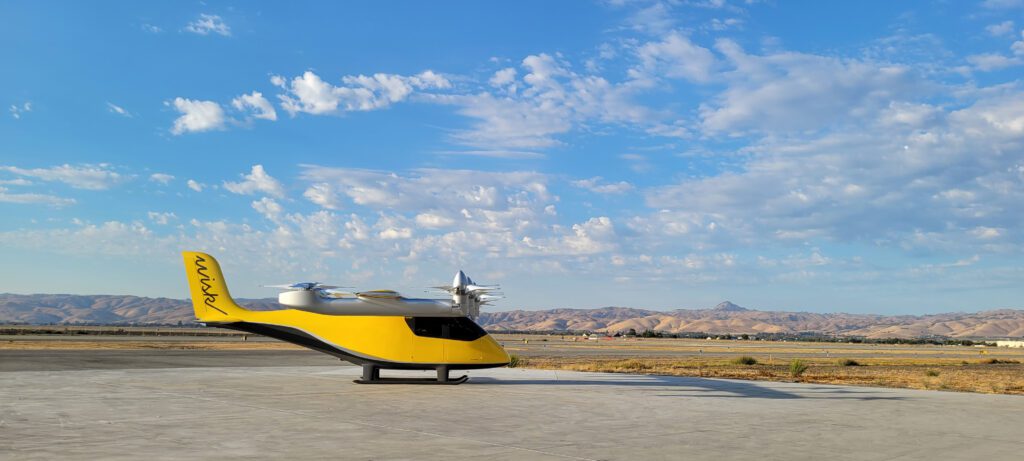
Wisk has unveiled the 6th generation of its autonomous eVTOL aircraft. (Photo: Wisk Aero LLC)
Wisk Aero just revealed its 6th-generation air taxi, an autonomous electric vertical take-off and landing (eVTOL) aircraft. The company claims that this vehicle, which is its go-to-market aircraft, is the first autonomous eVTOL to be a candidate for certification by the Federal Aviation Administration. Wisk is headquartered in Mountain View, CA, and is backed by both The Boeing Company and Kitty Hawk Corporation.
The 6th-generation eVTOL aircraft has a proprietary 12-propeller design and boom configuration, according to the company’s announcement, with improved propulsion systems. The vehicles have tilting propulsion units in front of the wings, in addition to fixed-lift units aft of the wings, which are optimized to increase the efficiency of energy management and to improve control of the aircraft.
The aircraft’s autonomous operations leverage “the same technology that accounts for more than 93% of automated pilot functions on today’s commercial flights,” according to Wisk, while depending on multi-vehicle supervisors to ensure human oversight of all flights.

Wisk is backed by Kitty Hawk Corporation, as well as The Boeing Company—which invested $450 million into Wisk at the beginning of 2022. (Photo: Wisk Aero LLC)
This sixth generation version of Wisk’s eVTOL will have a 90-mile range, a cruising speed of 120 knots, and room for four passengers. Wisk is targeting a price of $3 per passenger per mile. The company has also made efforts to ensure accessibility of its aircraft. The design of the entry and exit incorporates needs of individuals with various levels of mobility, and the user interfaces are intended to accommodate those with hearing and visual impairments.
Less than a month ago, Wisk released a concept of operations for urban air mobility (UAM) in partnership with Boeing. The two companies also collaborated with the FAA, NASA, Aurora Flight Sciences, and other industry partners to develop the UAM roadmap. It recommends ensuring that UAM services should be both safe and affordable for all, and it lays out guidelines for safely integrating uncrewed aircraft into civilian airspace.

Wisk has partnered with NASA since 2020 to study autonomous flight operations of eVTOL aircraft. (Photo: Wisk Aero LLC)
Another of the eVTOL developer’s partnerships is with Skyports, a designer and developer of vertiports based in the UK. They have collaborated since this spring, and a spokesperson for Skyports confirmed last month that the teams’ current focus is on flight and vertiport resource coordination. The partners published a concept of operations for autonomous eVTOL aircraft in April.
According to this concept of operations, “While the introduction of commercial autonomous eVTOL aircraft may not be immediate, [we] are focused on developing and testing processes and solutions that will be critical to the advancement of urban air mobility (UAM). This ConOps serves as a basis for discussion as industry and regulators begin to consider the integration of autonomous eVTOL aircraft systems into the national airspace system.”
The eVTOL developer is also partnering with the Council of Mayors South East Queensland in Australia following the signing of an MOU (Memorandum of Understanding) in June. Catherine MacGowan, Asia Pacific Region Director for Wisk, shared with Avionics International that they will be collaborating with the Council of Mayors on future business interests in relation to autonomous flight operations.